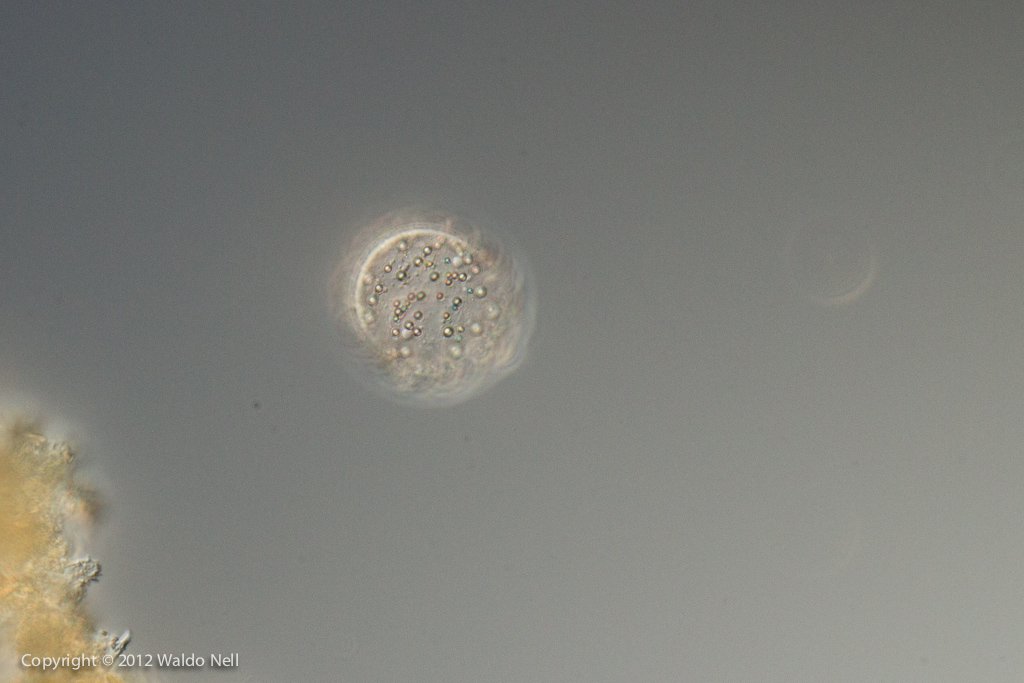Initially when a new reef aquarium is set up, most things are sterile. The tank itself never contained life, the plumbing never carried water and no marine ecosystem exists. Once the plumbing is done, the tank is filled with either a shallow or deep sand bed of aragonite based substrate. Some aquarists believe in no sand bed, I personally dislike those setups and they are not included in this discussion.
Next salt water is created from pure RO water and specially formulated reef salt. The tank is filled and the electrical system is turned on. In a typical aquarium water will flow in a closed loop, flowing into some overflow chamber in the main display tank, down a Durso standpipe to the sump, where it flows through various pumps and filters to eventually be returned to the main display tank via a return pump.
If the tank is left like this for an extended period some bacteria will start colonising the interior surfaces of all pipes, the substrate and everything else covered by water. The fun however starts when we introduce live rock. Live rock is nothing more than dead coral skeletons. A reef is built from calcium carbonate that forms the basis of most stony corals' skeletons, and as they grow they secrete more calcium carbonate, increasing the biomass of the reef. Not all of the reef is covered in tissue though, and as the growing progress the older parts of the skeleton becomes bare calcium carbonate rock. And by bare I do not mean bare of life, I mean bare of the tissue of the host coral. It is actually filled with life, from the small anaerobic bacteria deep within the rock, to aerobic bacteria on the surface and just below the surface, to thousands of worms, crustaceans, coral, polyps, etc.
It are these rocks that we introduce to our tanks to "seed" it, i.e., to be a source of life for various small but very beneficial and desirable organisms. Most of the life dies off during transport from the reef to the resellers, yet a lot of that life recover when placed in a properly cared for aquarium.
As time goes by life on live rock starts spreading to the sand bed, were a large amount of organisms start to inhabit the various layers of the substrate. When fish, coral and invertebrates are added, the marine ecosystem is complete. Food is added to the tank to feed the fish, fish produce waste products such as ammonia and excrement which feeds other organisms in turn. The wastes not utilised are taken out of the tank via chemical adsorption and skimming, and the remaining wastes are broken down by bacteria.
It is obviously much more complex than this, but in essence this life cycle supports a whole ecosystem of life that is mostly unseen by the aquarist. People marvel over the beautiful coral, invertebrates, fish and anything else large in the display tank. Yet these represent only a tiny fraction of the life sustained in a tank. Aquarists think nothing of taking out a pump or reactor and washing it - and to be fair it is critical that these maintenance activities be undertaken - yet thousands of small organisms are killed every time anything within the aquarium is cleaned. This is the price one has to pay for maintaining the ecosystem.
Enough theory, this article is about showcasing some (and I emphasize the word some as this represents merely a tiny fraction) of the organisms that we do not normally see, but that performs a crucial role in the marine ecosystem. These are all organisms I found in the substrate (aragonite sandbed) of my aquarium - both larger grained aragonite based sand as well as from an oolitic deep sand bed. I have only started to document the organisms so please regularly check for updates.
Take note that my intention was not to win a photographic competition with my photos, however I tried (wherever possible) to not take wetwebmedia like photos. Also take note that I cannot possibly identify all these organisms, if you feel my identification is incorrect or have an identification for an organism I have not named, please let me know.
Algae / Diatoms
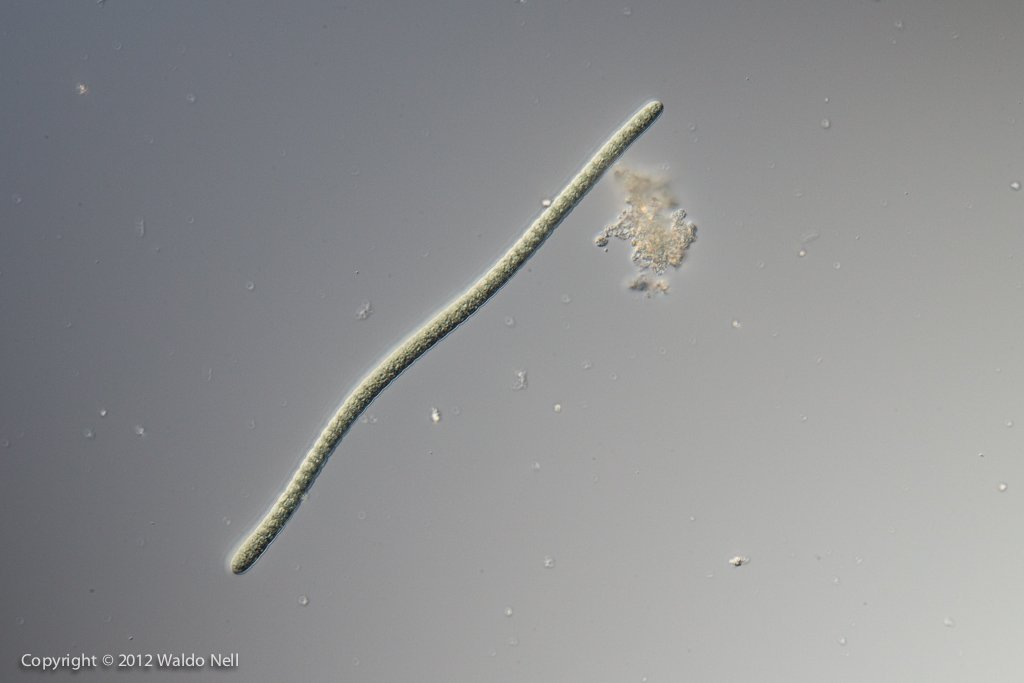
Algae 40x DIC
A strand of algae.
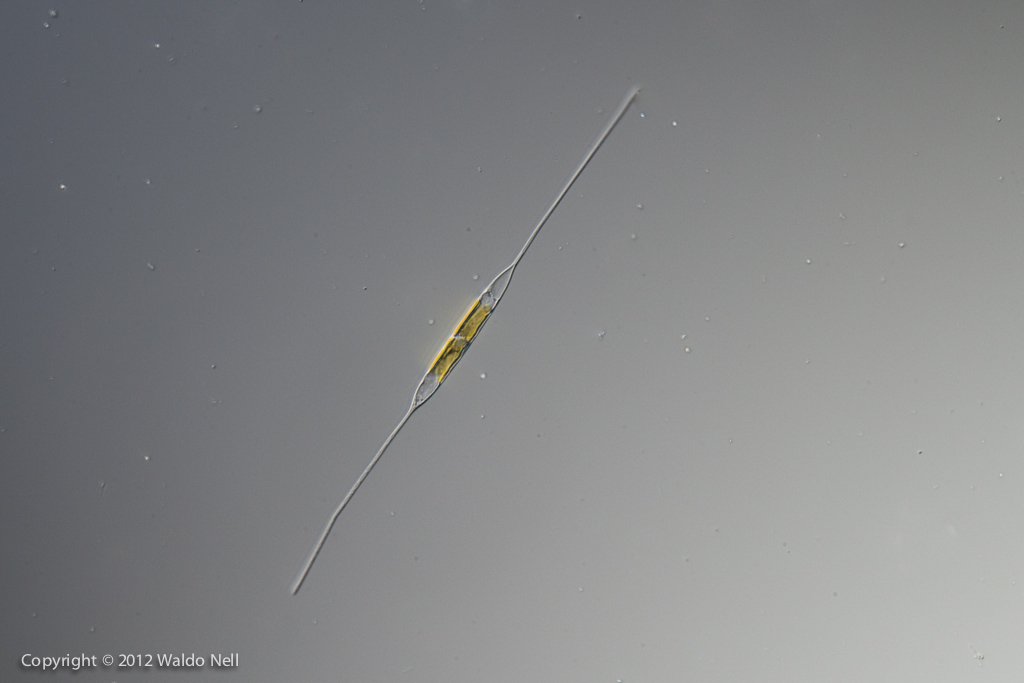
Cylindrotheca sp. Diatom 40x, DIC
Whenever you see a golden brown layer of algae cover the sand / glass panes of a new aquarium, you can be almost certain it is this diatom.
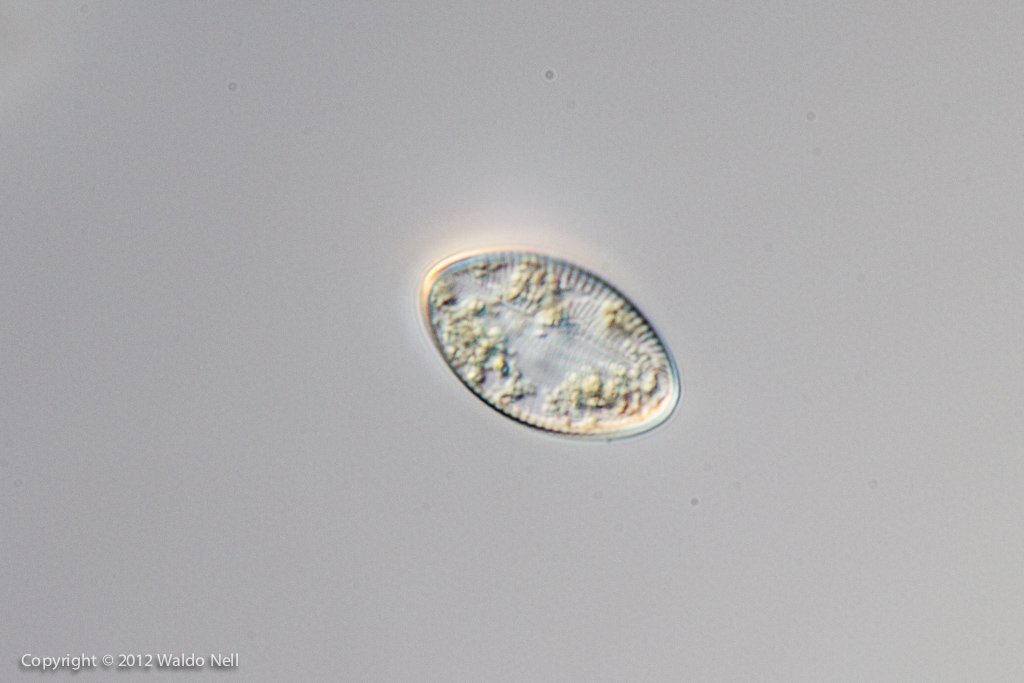
Diatom 40x * 2 DIC
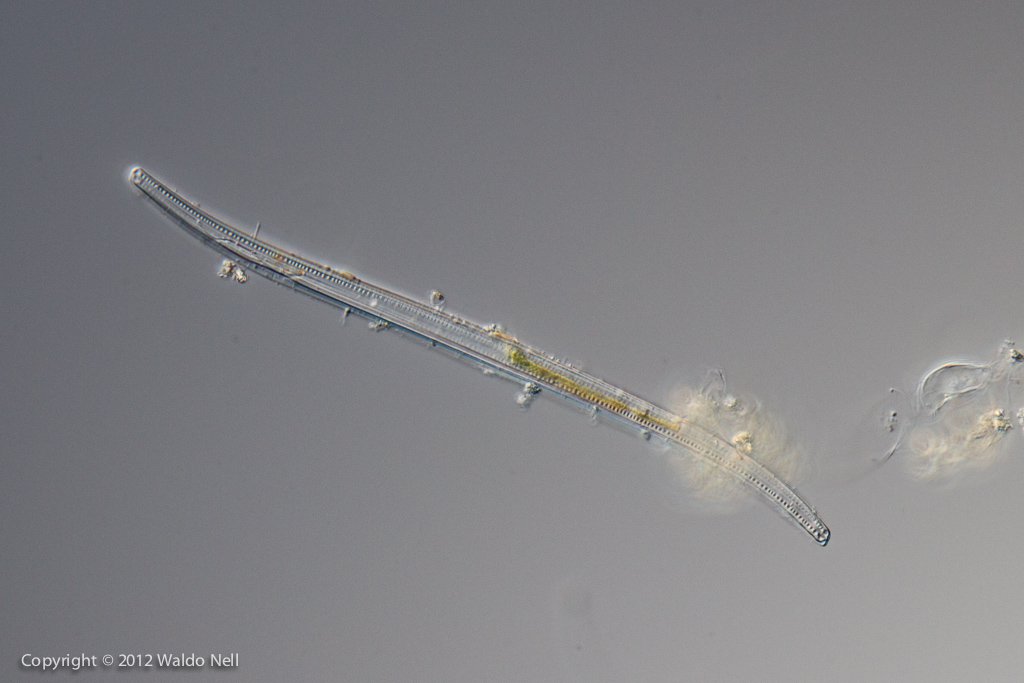
Diatom 40x DIC
Diatoms come in many different shapes and sizes. This one is particularly beautiful.
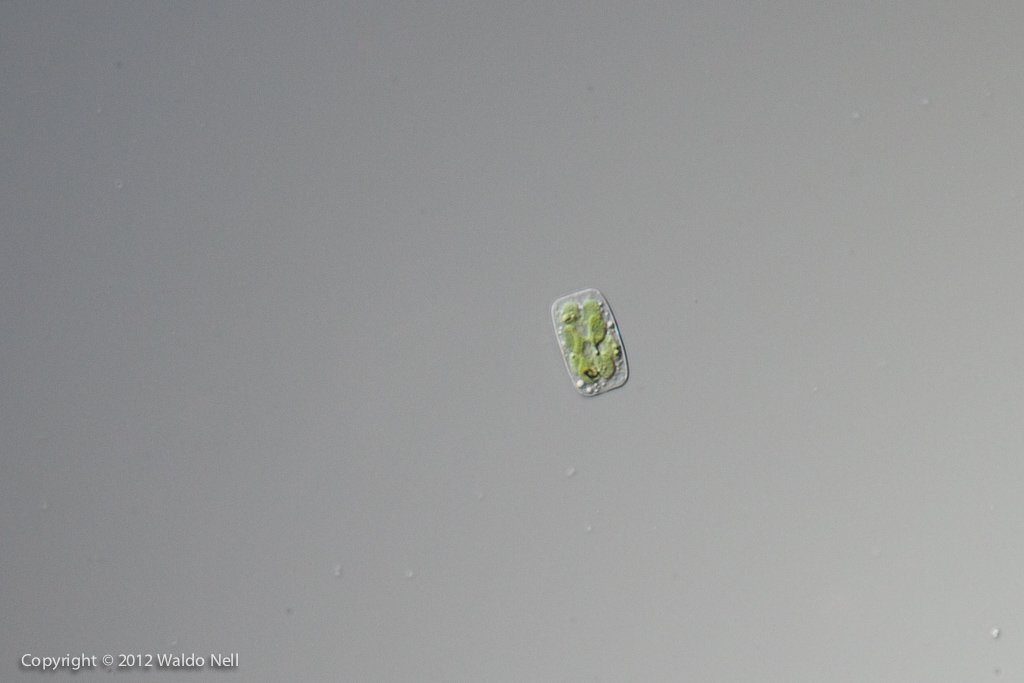
Diatom 40x DIC
Tiny diatom
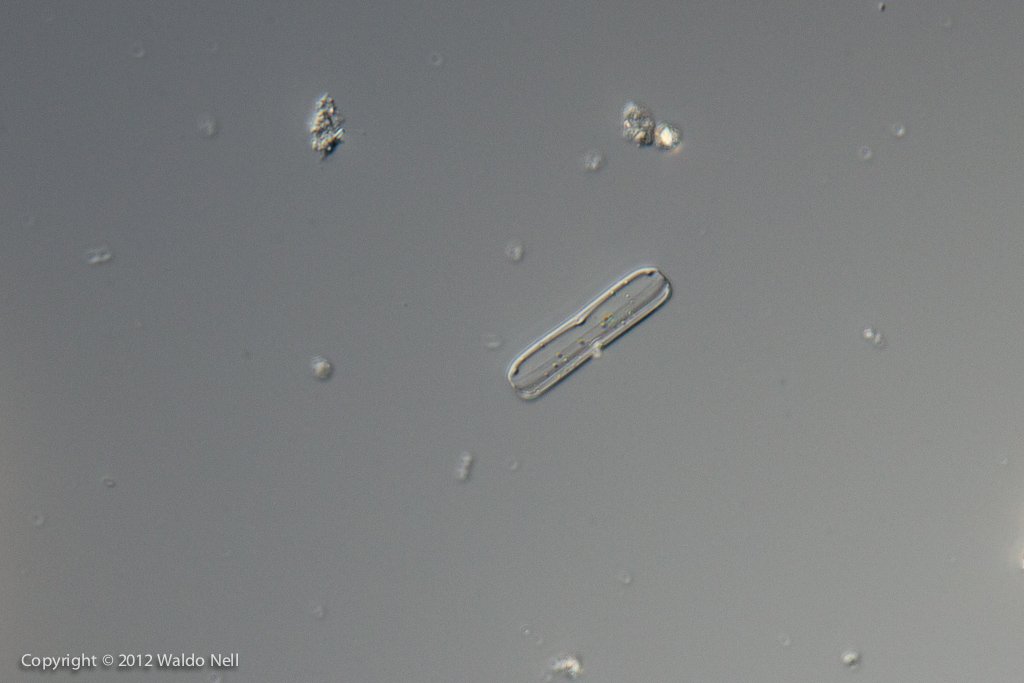
Diatom 40x DIC
Tiny diatom skeleton
Crustaceans
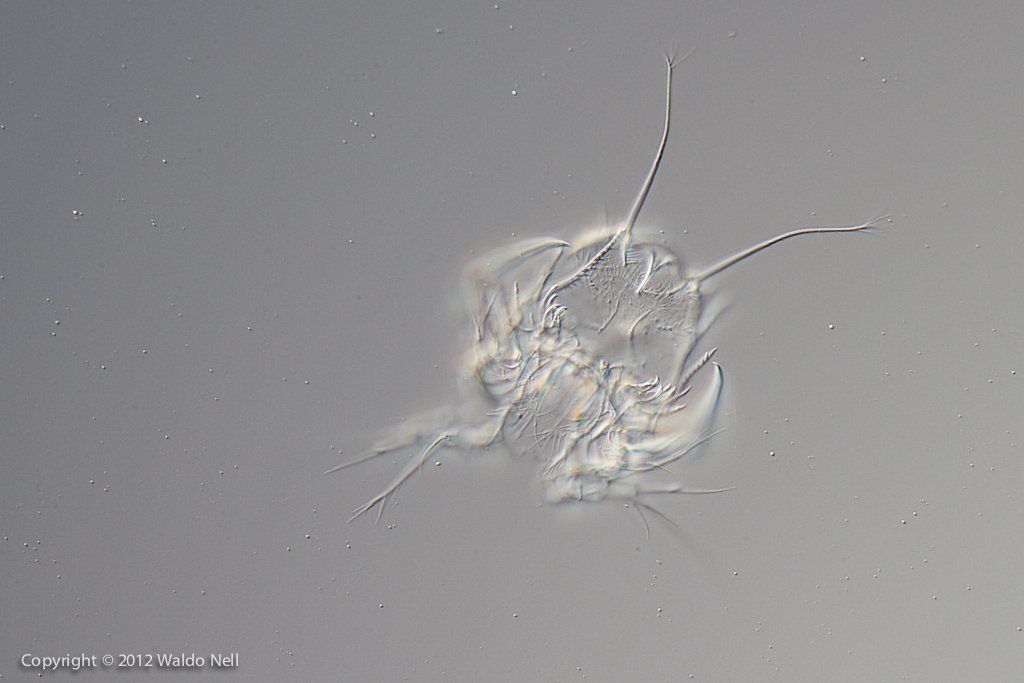
Exoskeleton of Crustacean 20x * 2, DIC
Lots of different crustaceans inhabit the reef aquarium, and most molt many times during their lives in order to grow.
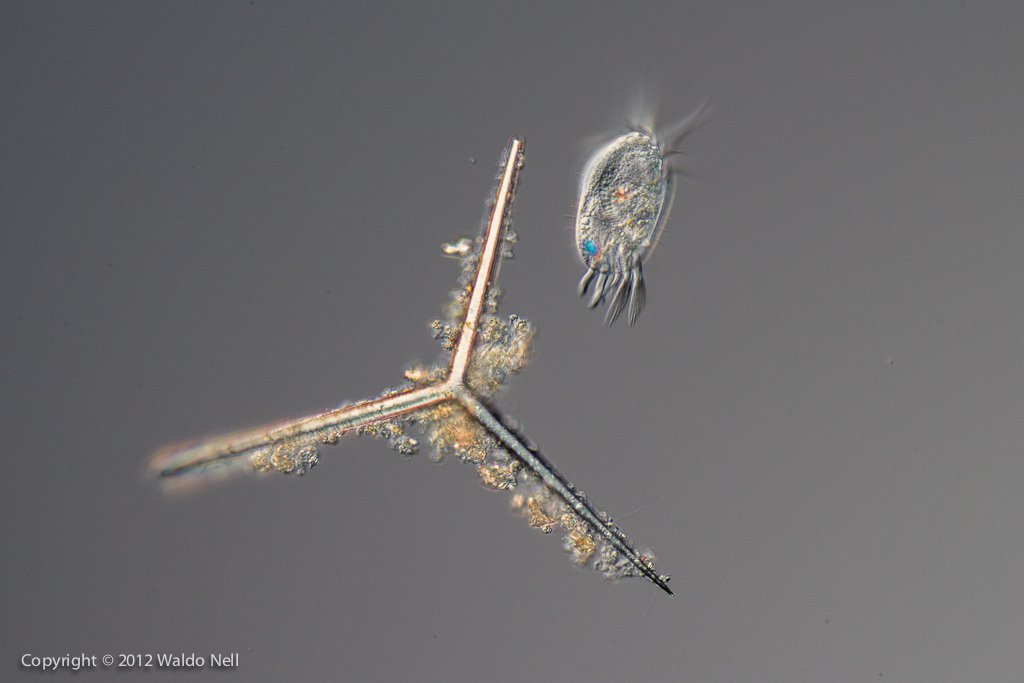
Euplotes 20x * 2, DIC
A tiny ciliate (Euplotes) fiddling with a sponge spicule.
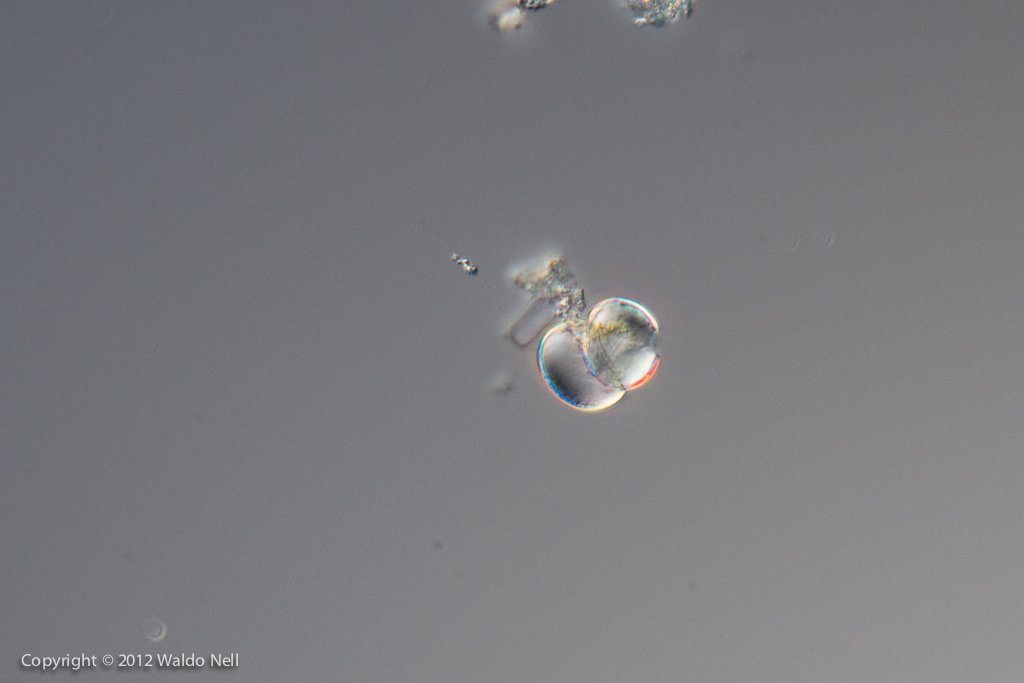
Egg Shells (?) 40x DIC
These seem to be egg shells of something that hatched from them.
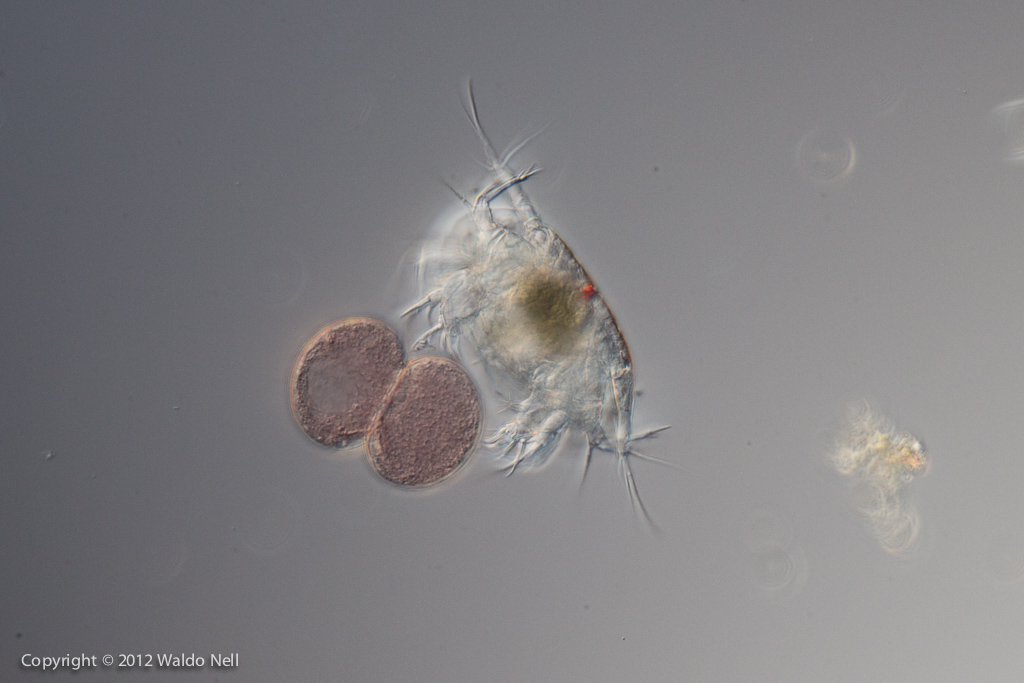
Euplotes on unknown organism 40x DIC
Euplotes grabbing on to an unidentified organism
Spicules
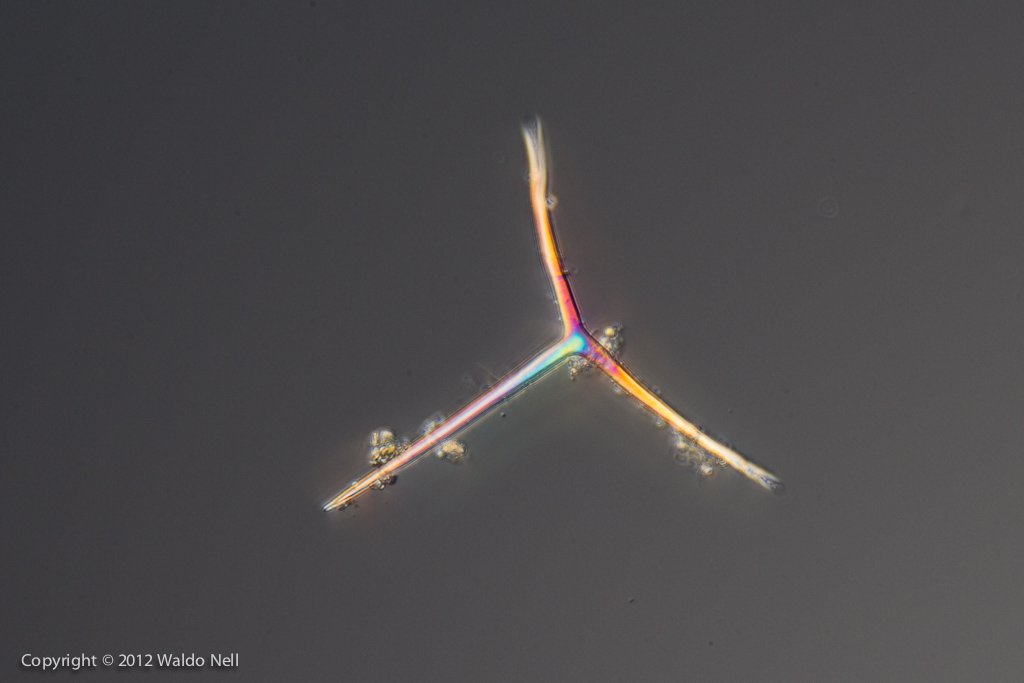
Sponge Spicule 20x * 2, DIC
A sponge is made up of many spicules, mineral based structures that give the sponge structure. This one is from those tiny white sponges that love to grow in the sump.
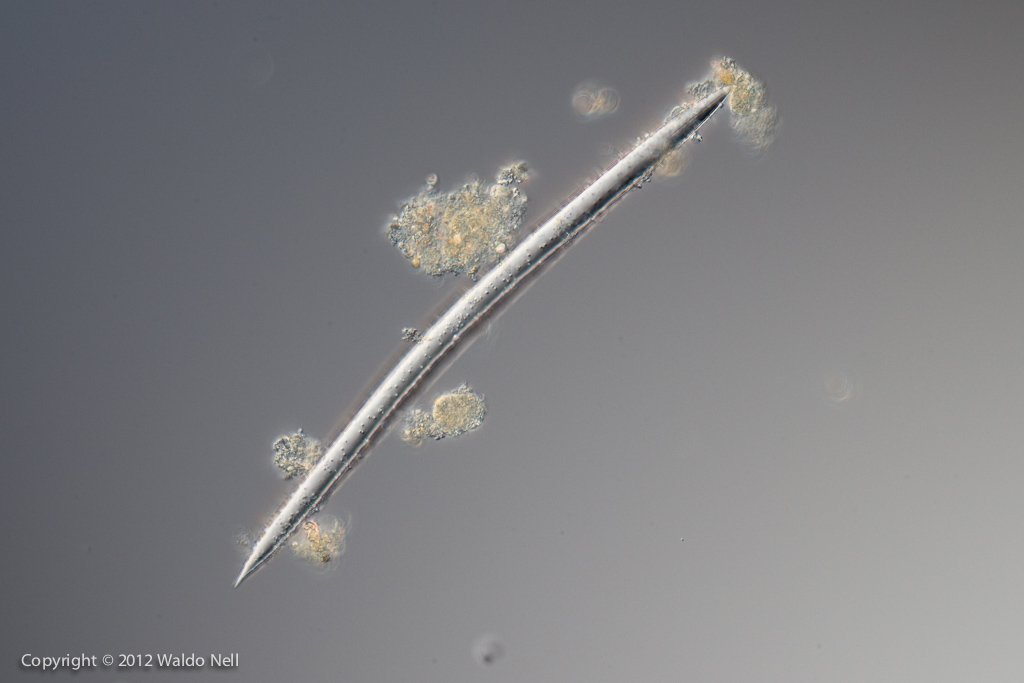
Spicule 40x DIC
A spicule of some unidentified organism.
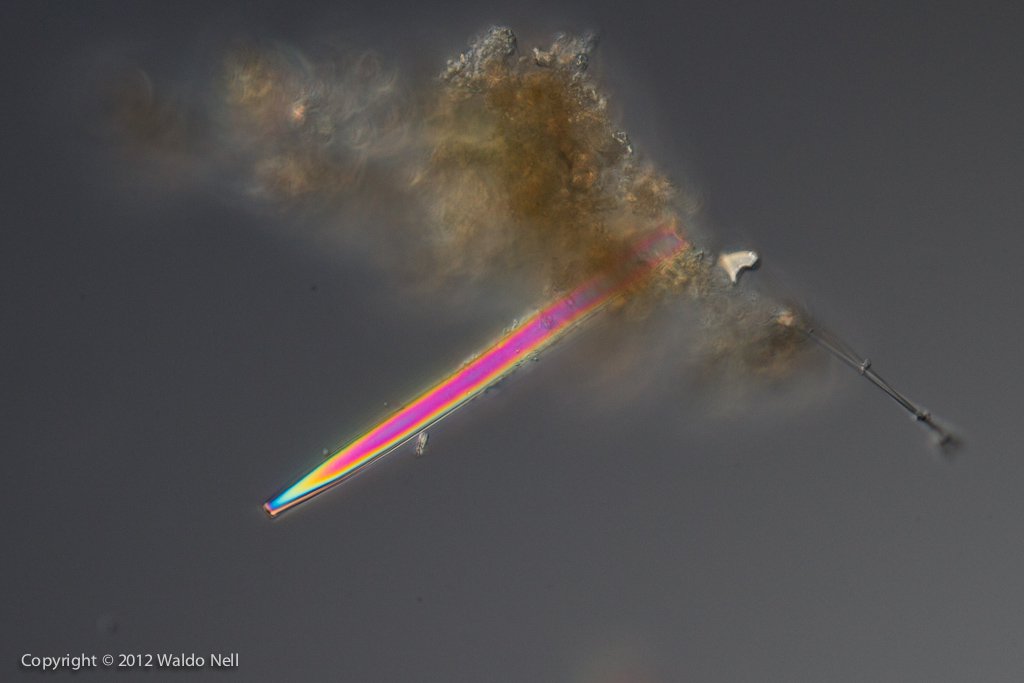
Spicule 40x DIC
Part of a spicule, heavily polarised.
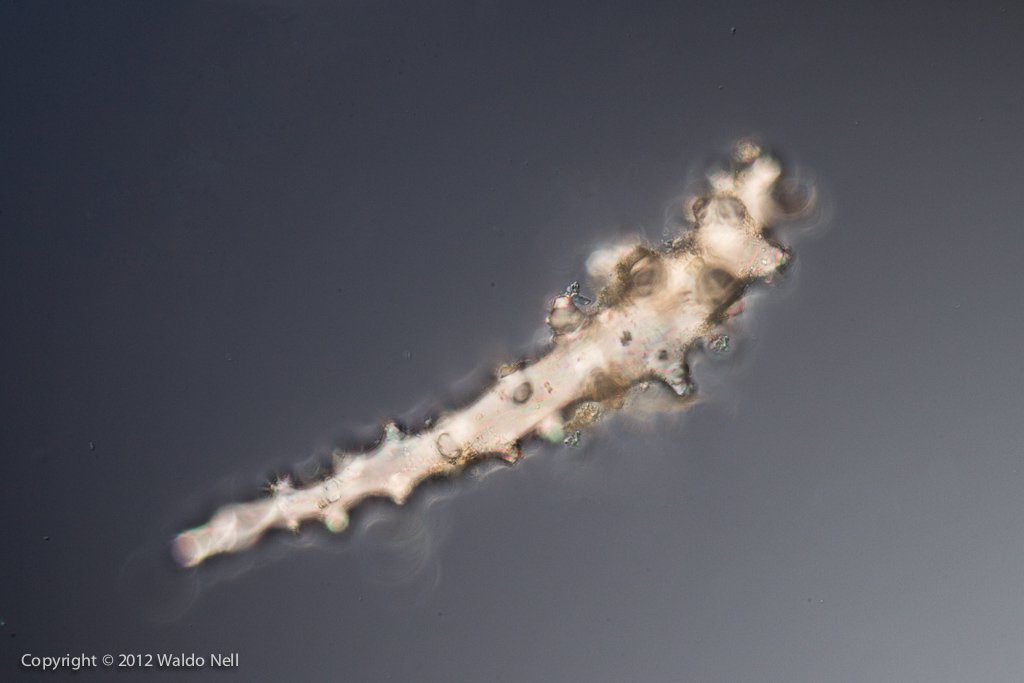
Spicule 40x DIC
Another spicule from an unidentified organism.
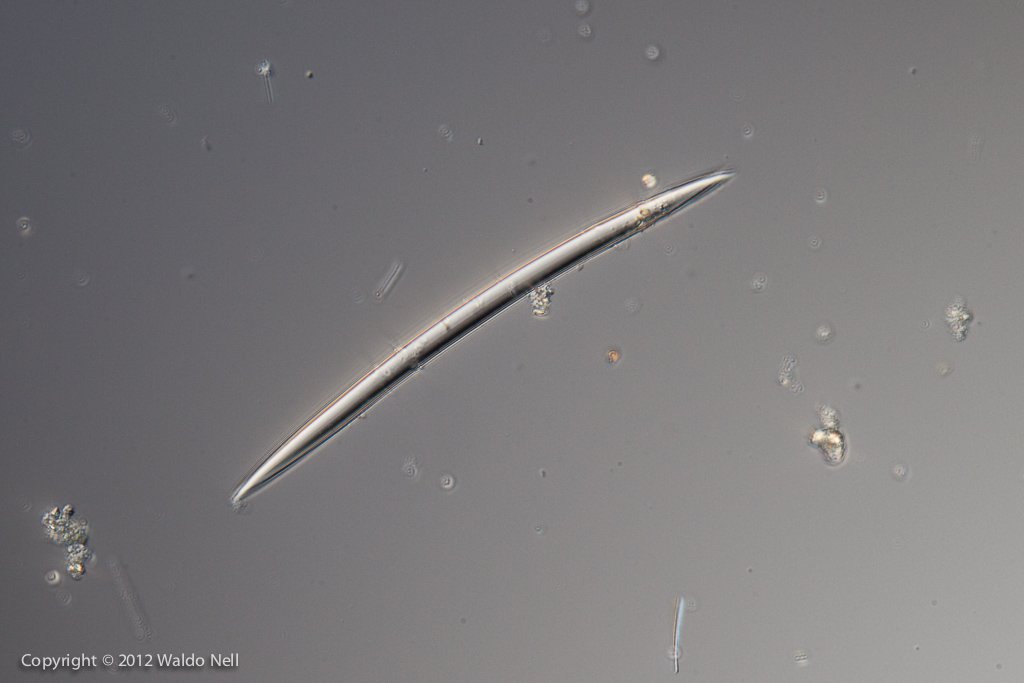
Spicule 40x DIC
Another spicule from an unidentified organism.
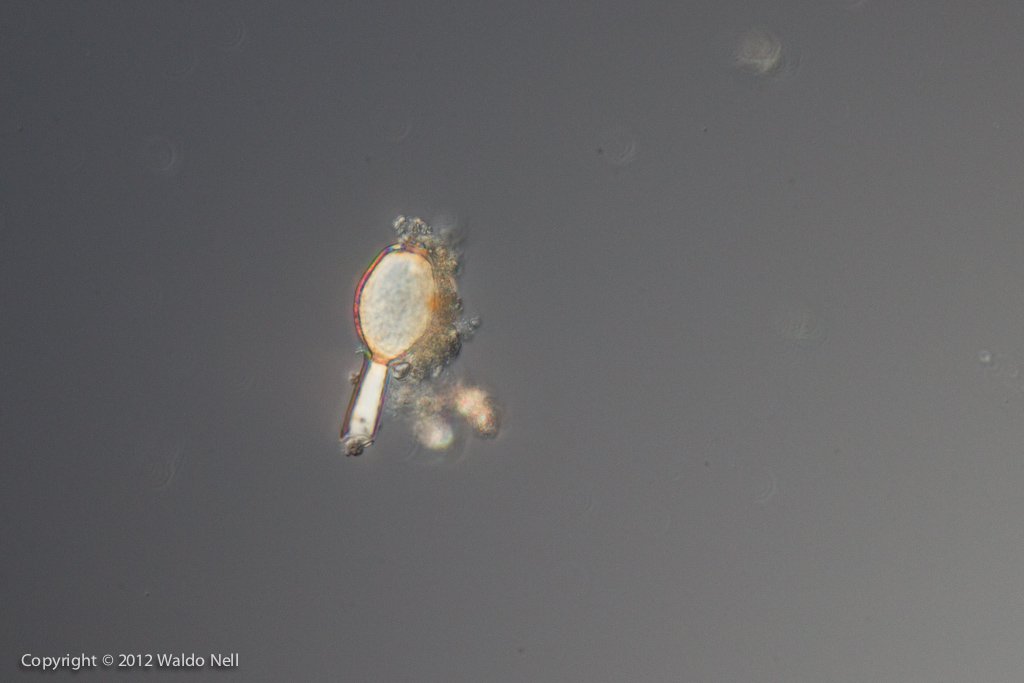
Spicule 40x DIC
Top fragment of a spicule of another unidentified organism.
Worms
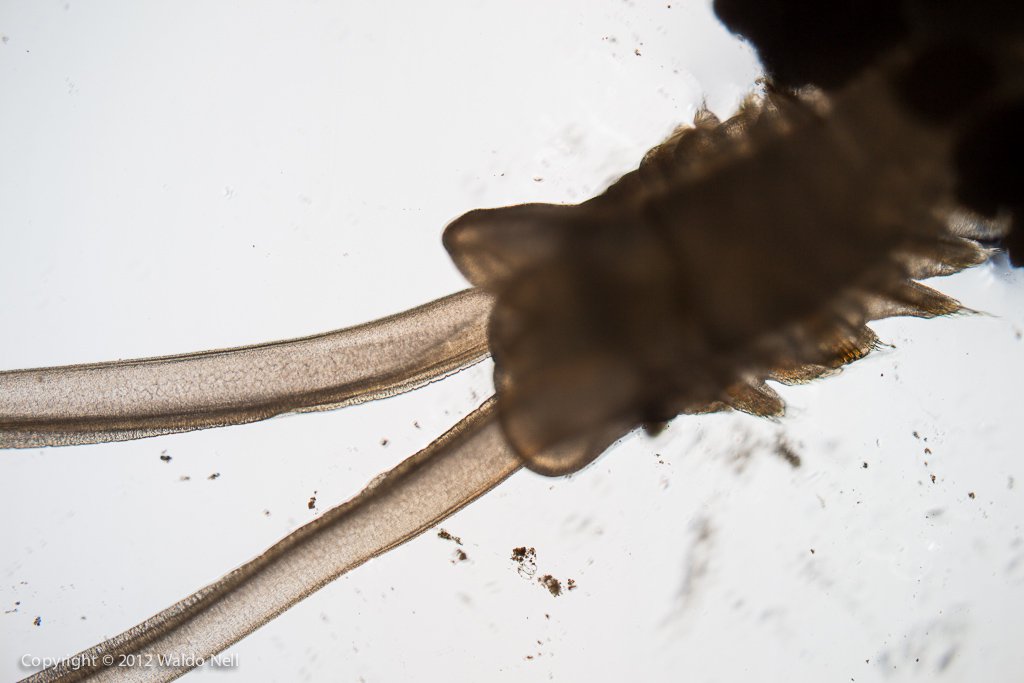
Spaghetti worm (?) 4x BF
When you look at the substrate at a strong angle, you always see white, almost translucent tentacles sweep the surface for detritus. These tenticals come from a worm that secretes some mucus I believe to protect its body, and hides in the sand with only the tentacles visible. Its anatomy seems similar to a syllidae worm.
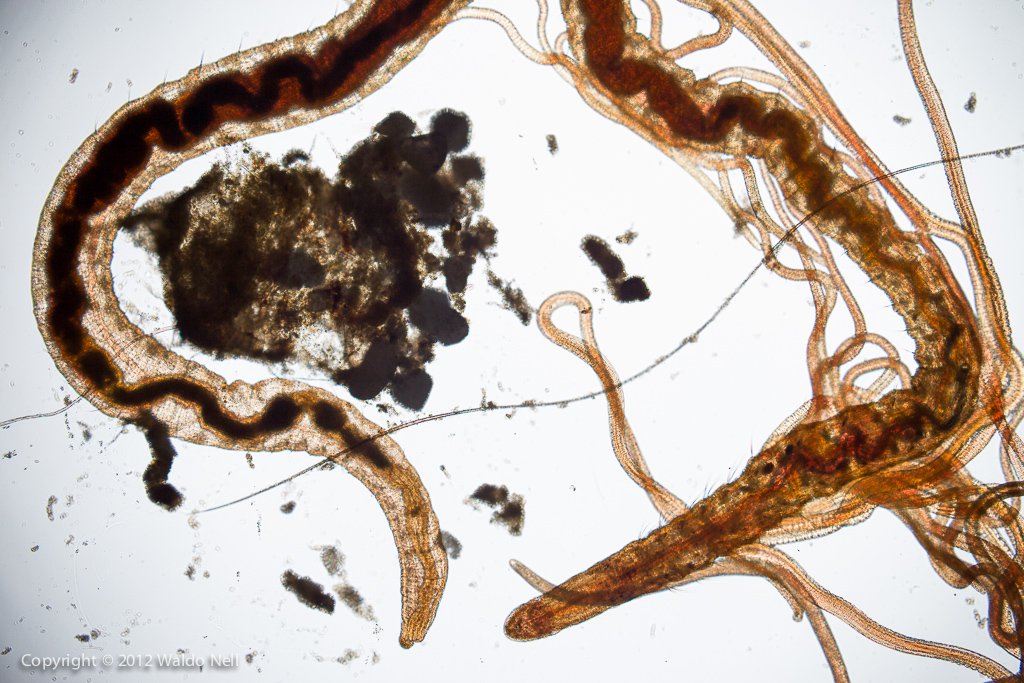
Worm 4x BF
Sometimes you can observe reddish worms underneath the sand bed, against the glass pane of the aquarium. I was surprised to learn that these worms are not like typical worms, but do have a lot of tentacles not unlike the spaghetti worm. I have never seen these tentacles until now. They also seem to secrete some protective housing for its body.
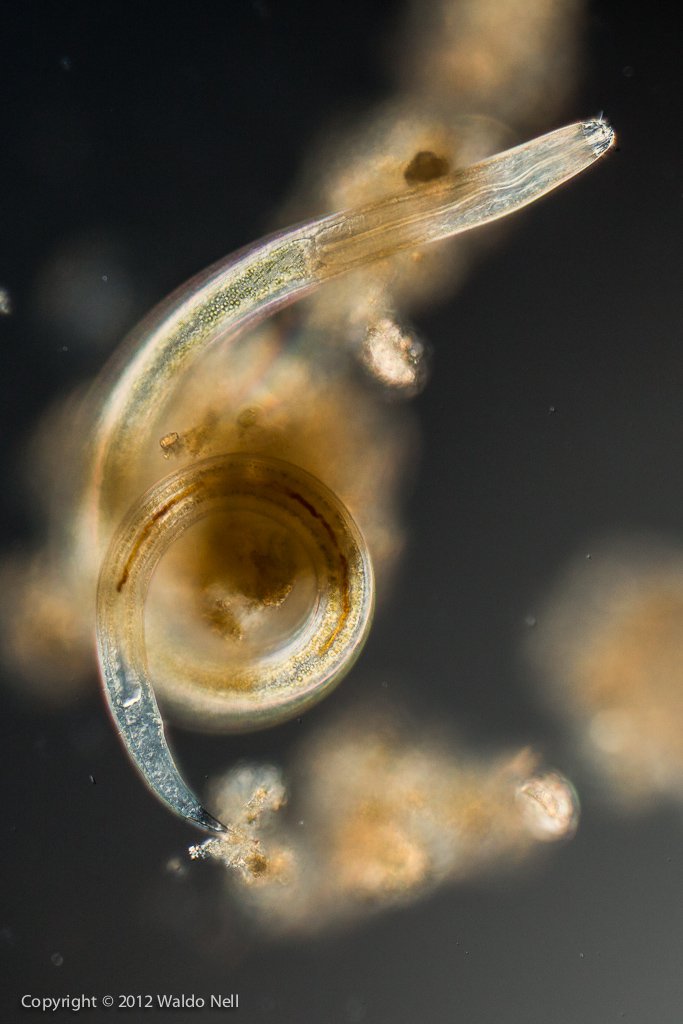
Nematode 20x DIC
Nematode worm
Other
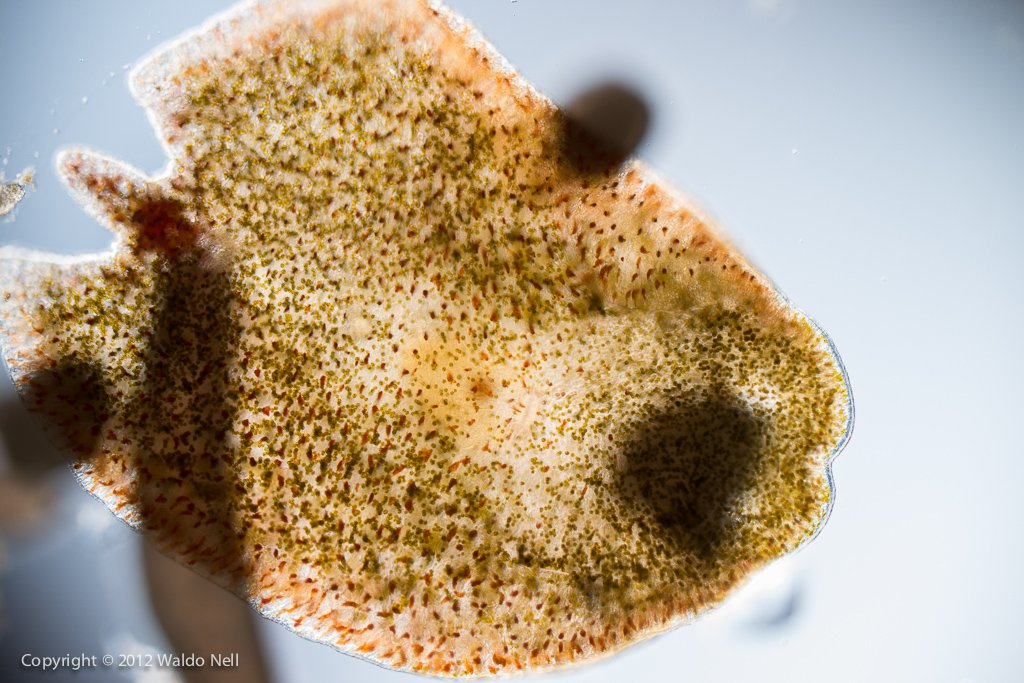
Flatworm 10x, DIC
A red flatworm searching for algae and detritus.
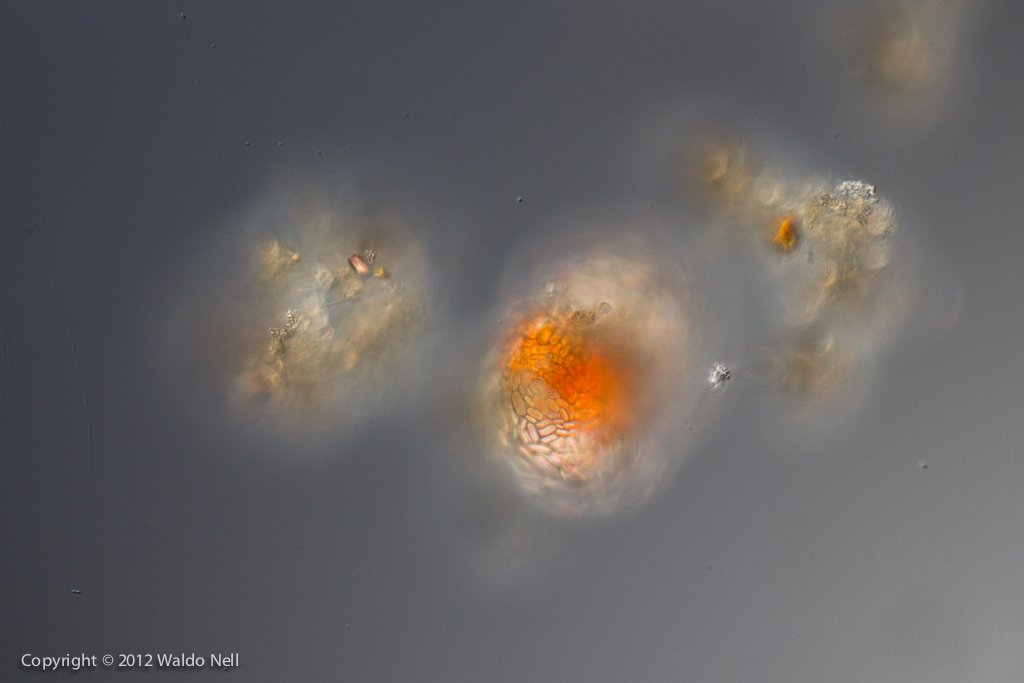
Egg Sack (?) 40x DIC
This seems to be a sack of eggs of some organism
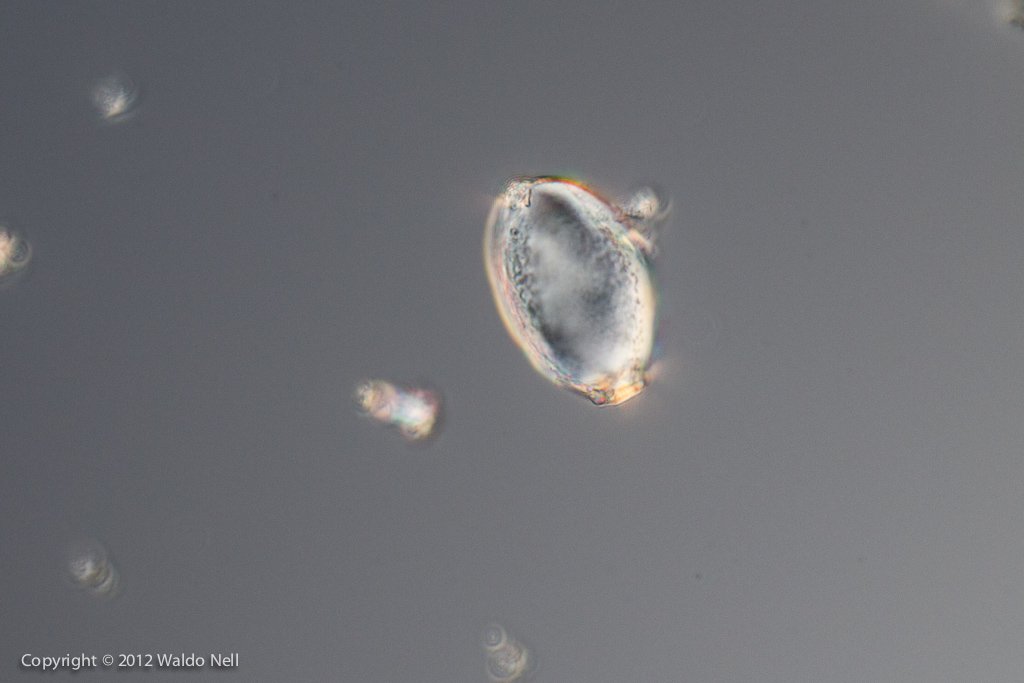
Sponge (?) 40x DIC
A baby sponge?
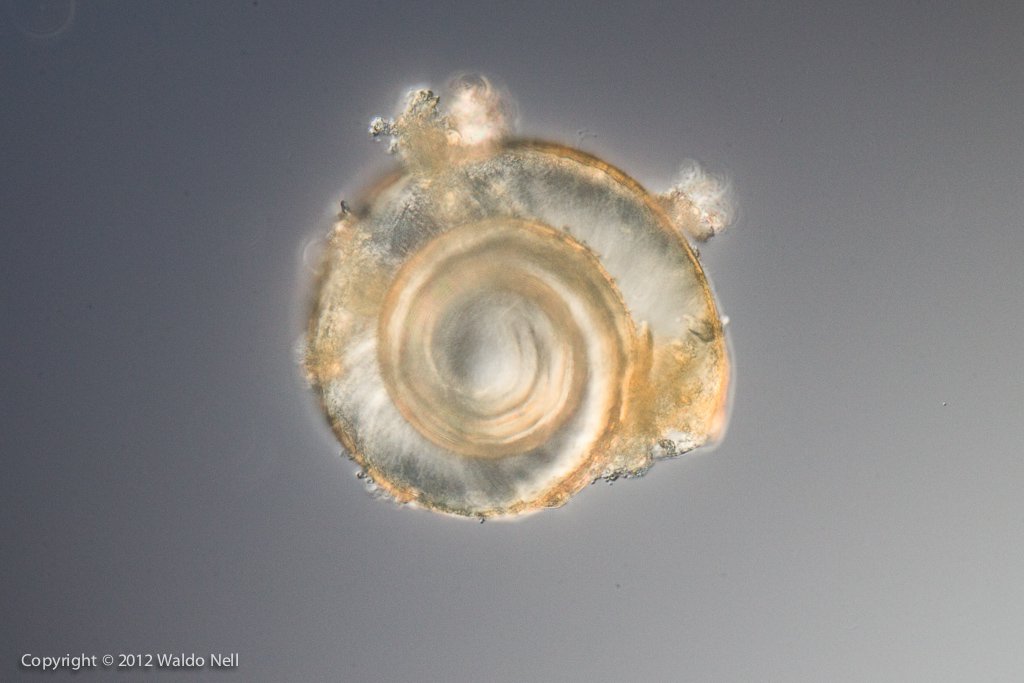
Snail Shell 40x DIC
Tiny snail shell
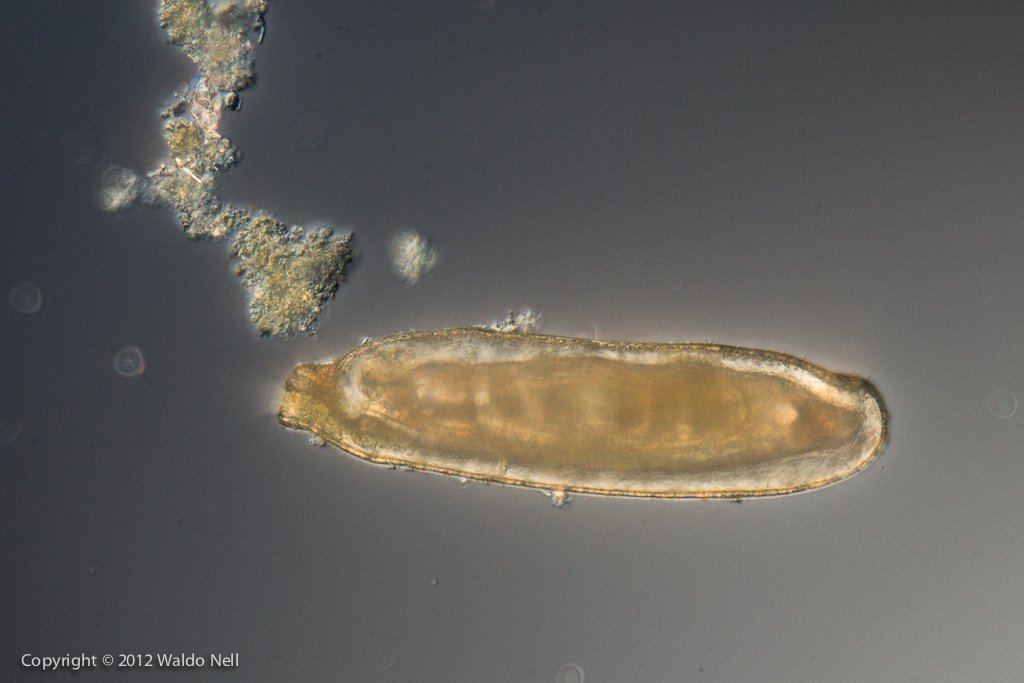
Sponge (?) 40x DIC
This looks like a small sponge.
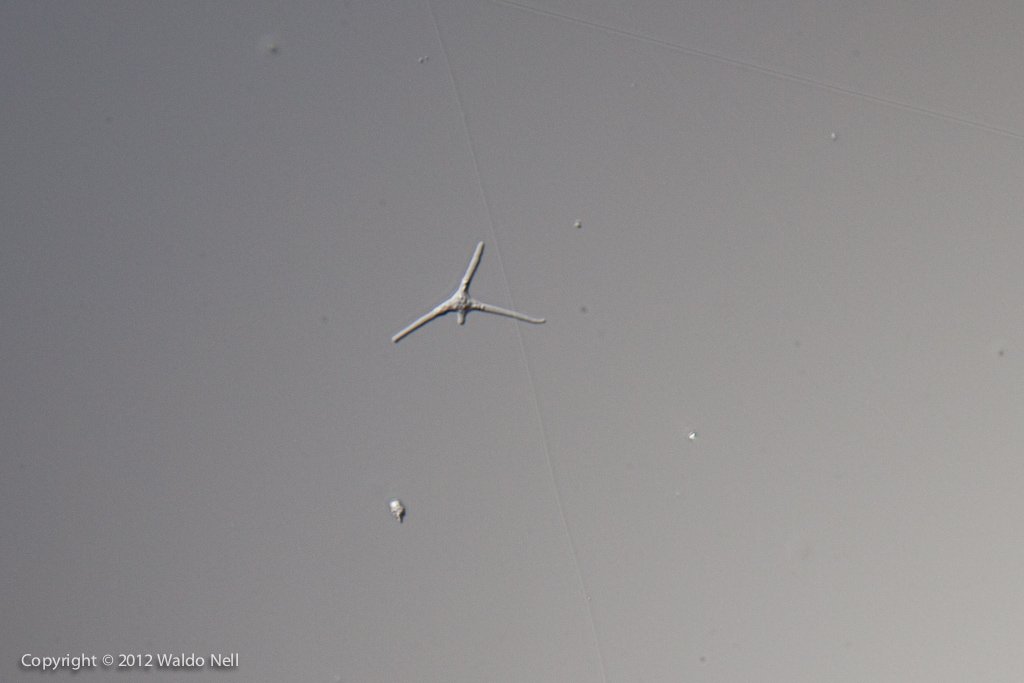
Brittle Star Larvae 40x DIC
This seems to be the larvae of a brittle star.
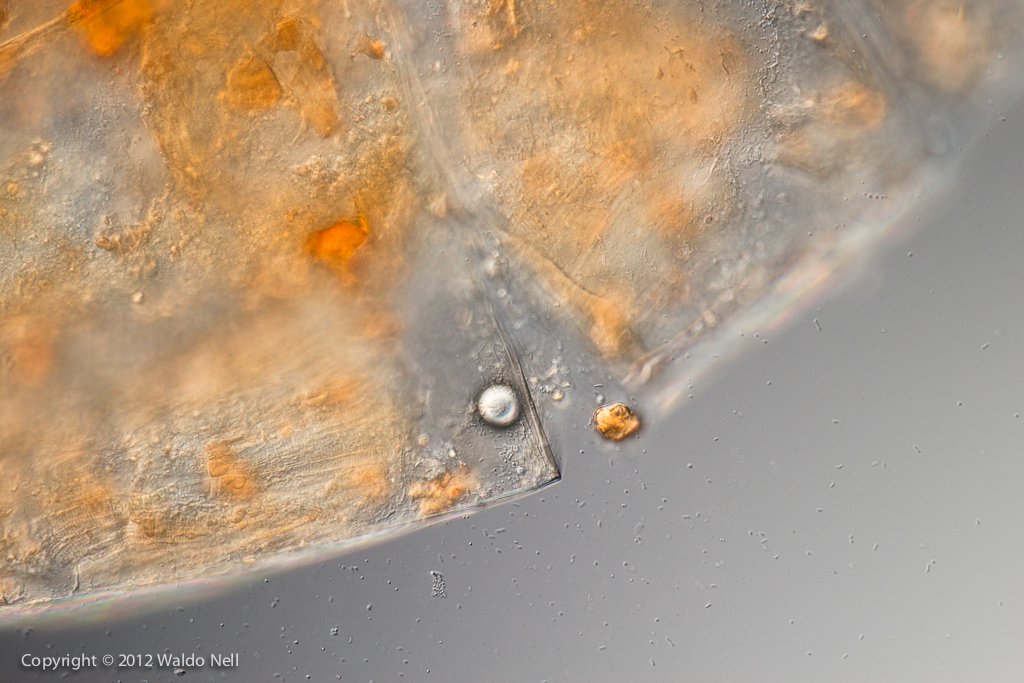
Bacteria 40x * 1.25 DIC
The most prolific of all organisms, bacteria consuming an uneaten copepod (Cyclopeeze). They are visible as tiny dots in and outside the copepod.
Unidentified
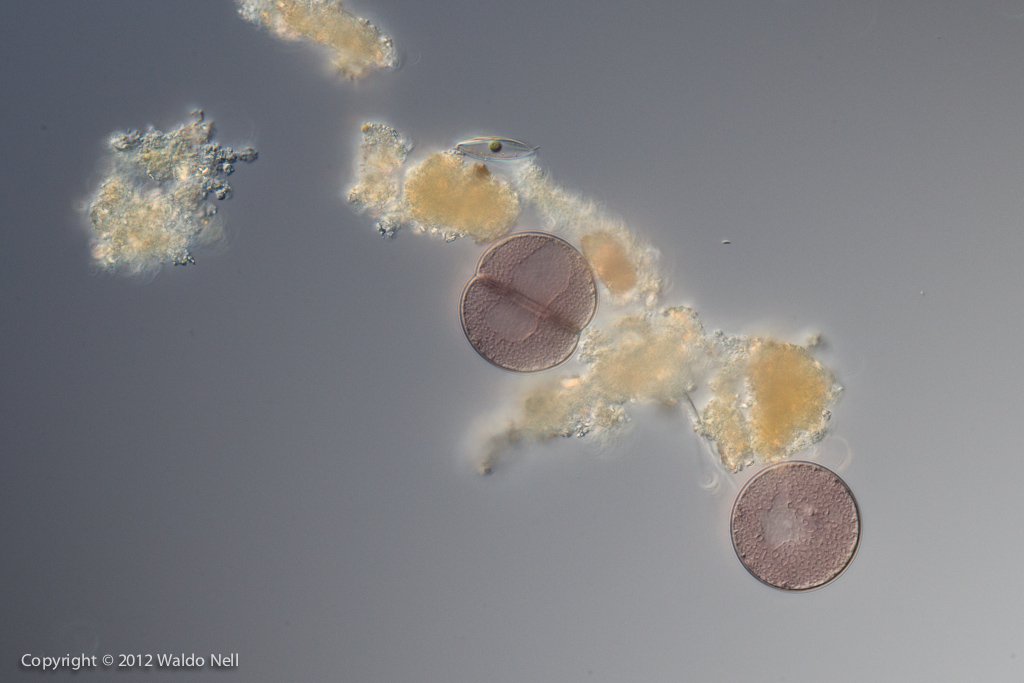
Unidentified 40x DIC
In this picture you can see two kinds of organisms. One of these organisms seem to be undergoing mitosis.
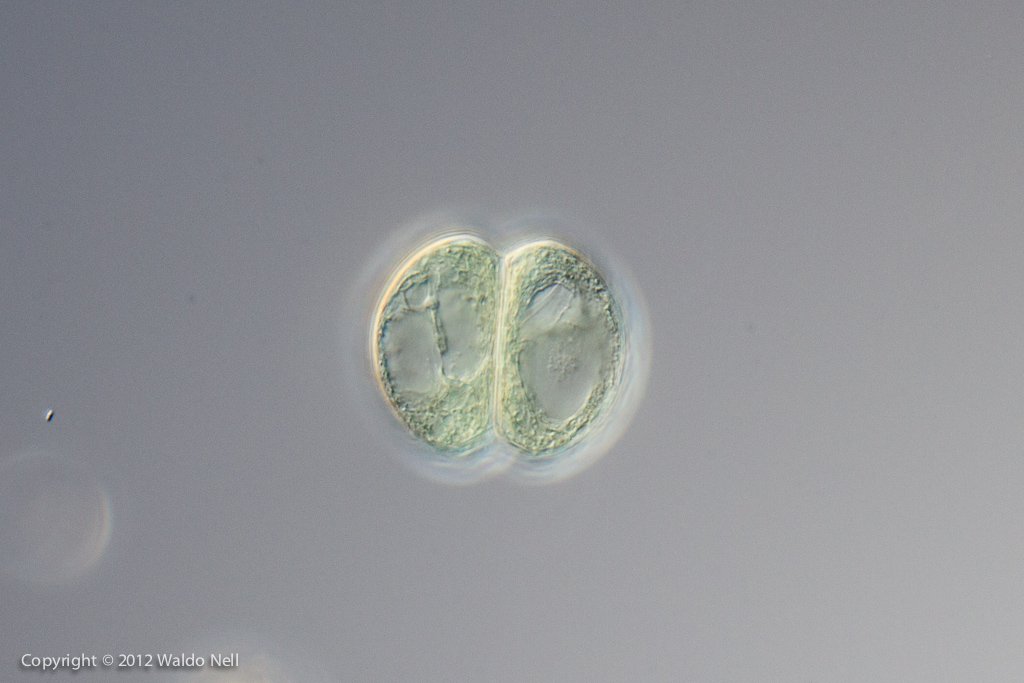
Unidentified 40x DIC
Another organism (similar to the pink one) undergoing mitoses (I think)
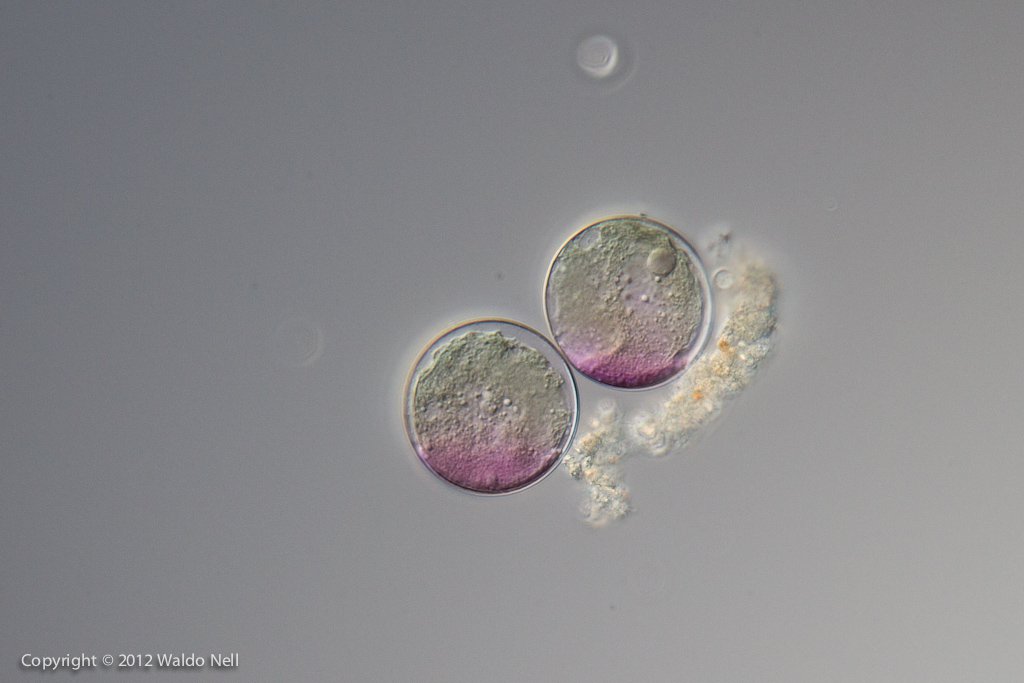
Unidentified 40x DIC
These organisms are very strange. They appear to be both green and pink. Not sure what the significance of this is.
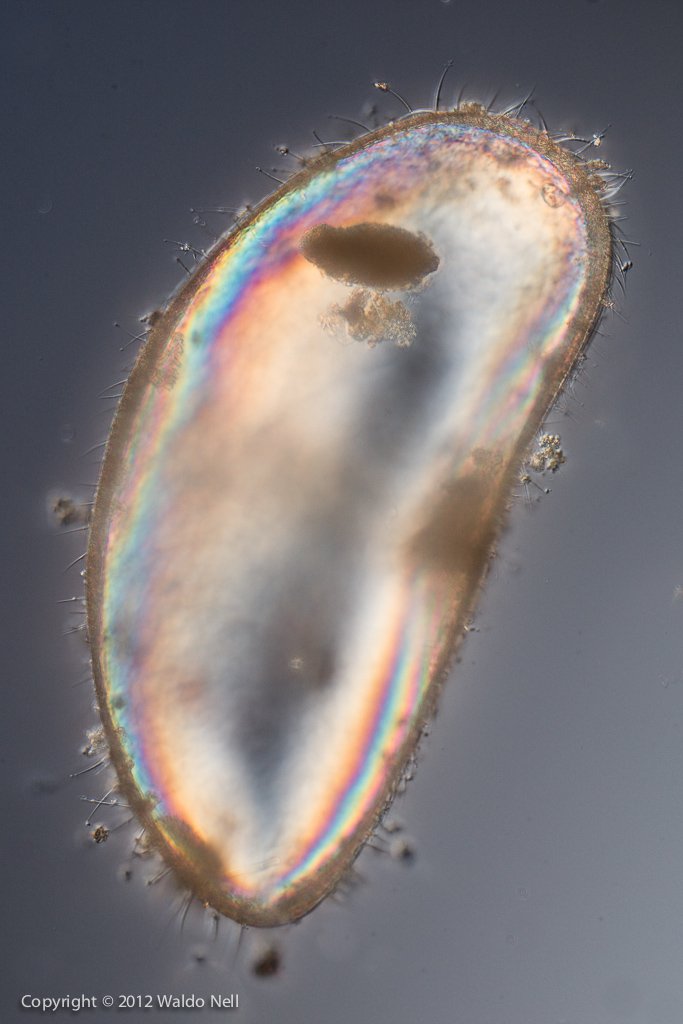
Unidentified 20x DIC
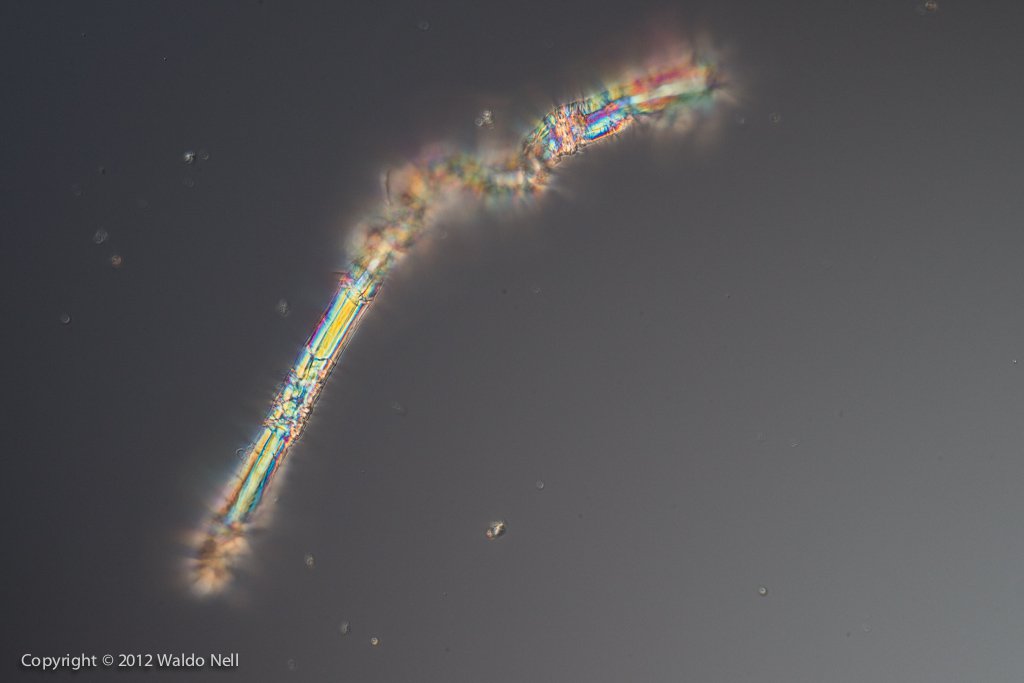
Unidentified 20x DIC
Some filament that polarises light.
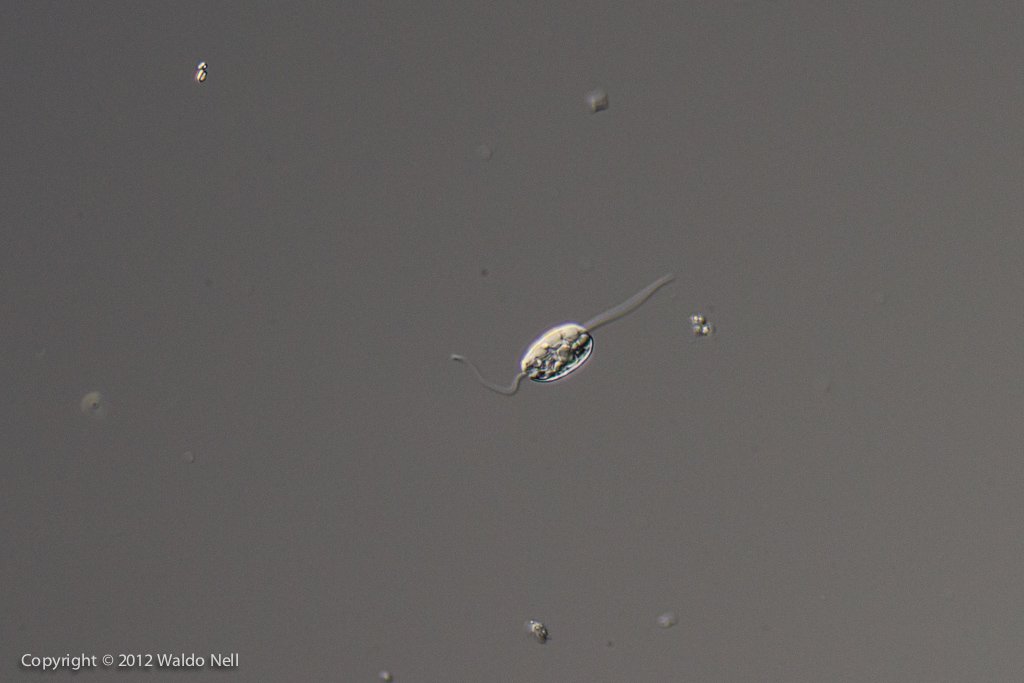
Unidentified 20x * 2, DIC
Tiny organism that propels itself with two cilia.
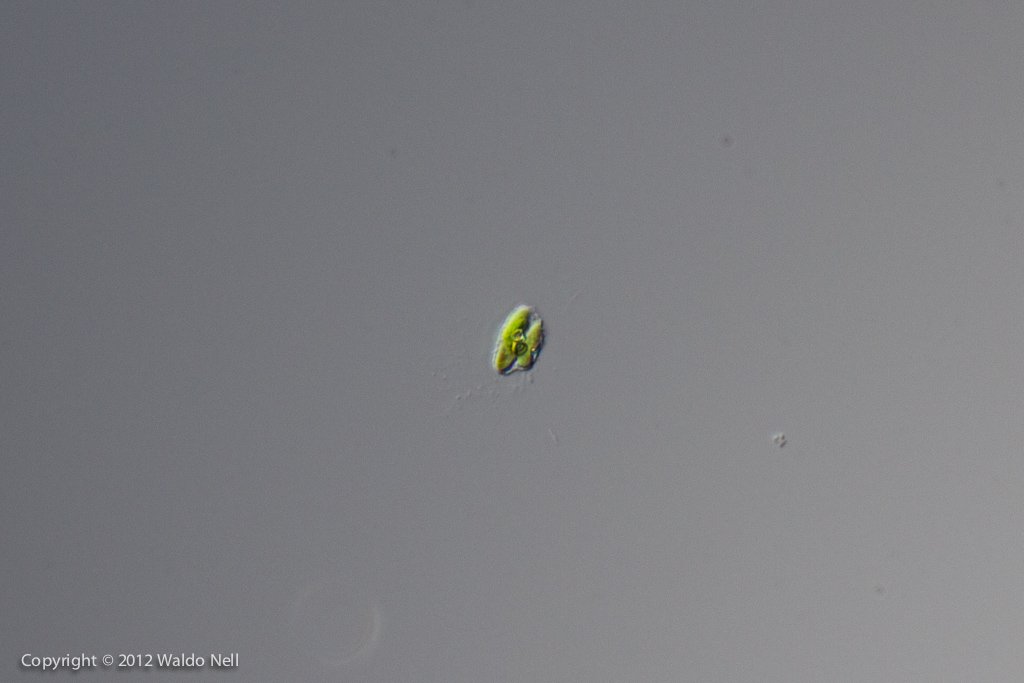
Unidentified 40x DIC
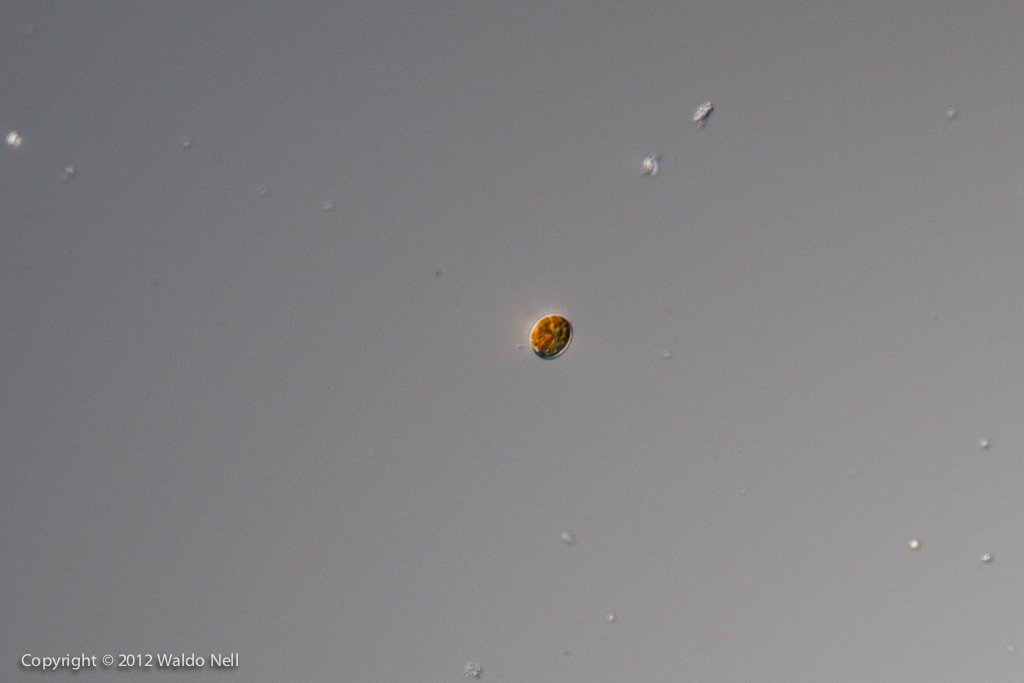
Unidentified 40x DIC
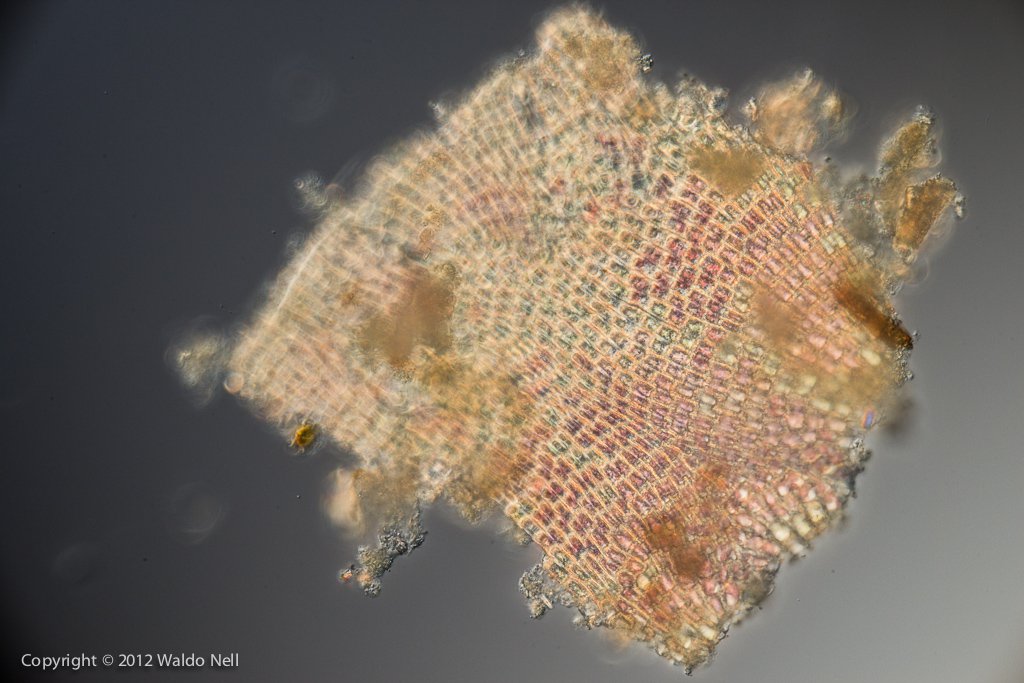
Unidentified 40x DIC
Algae? Not sure, it seems to have cells.
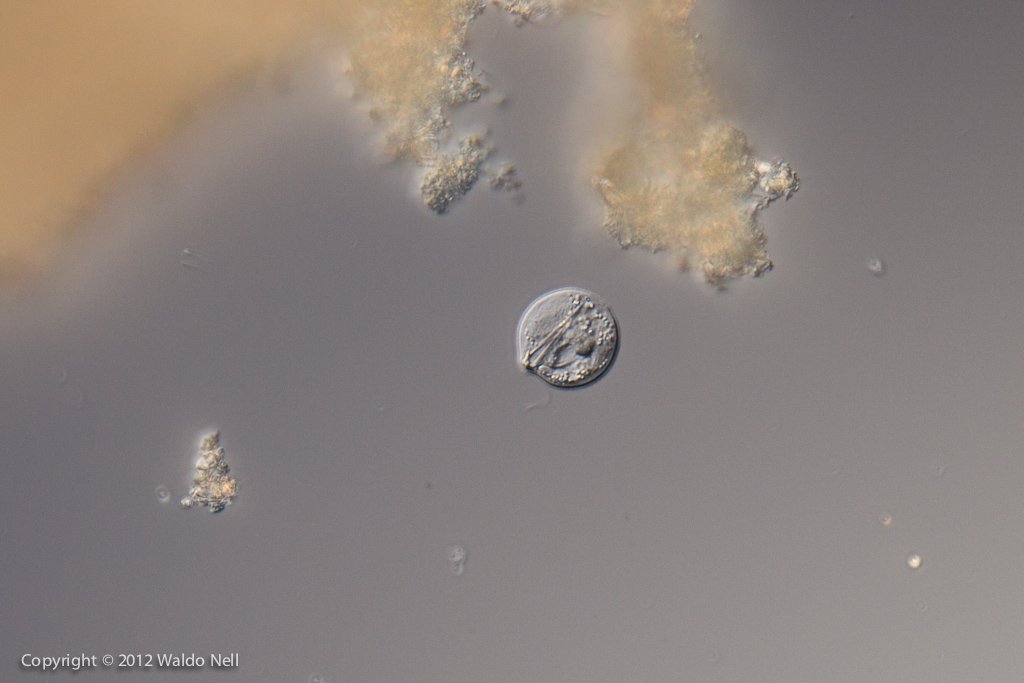
Unidentified 40x DIC
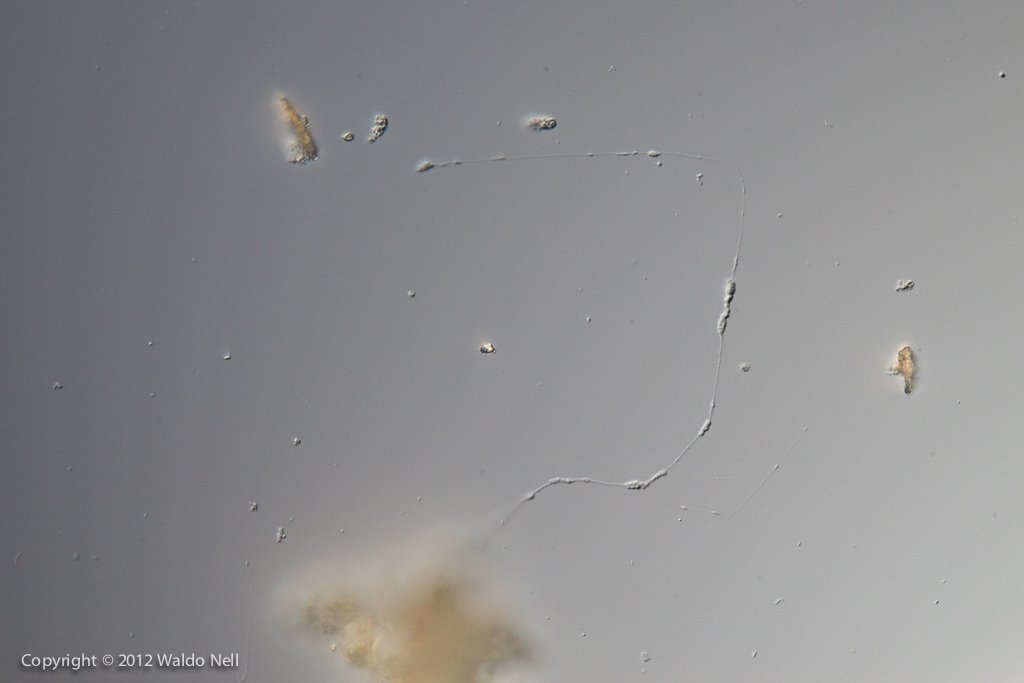
Unidentified 40x DIC
This organism pumped something via the thread visible in the photo. Not sure what it was but it looked like it was pumping something up / down.
